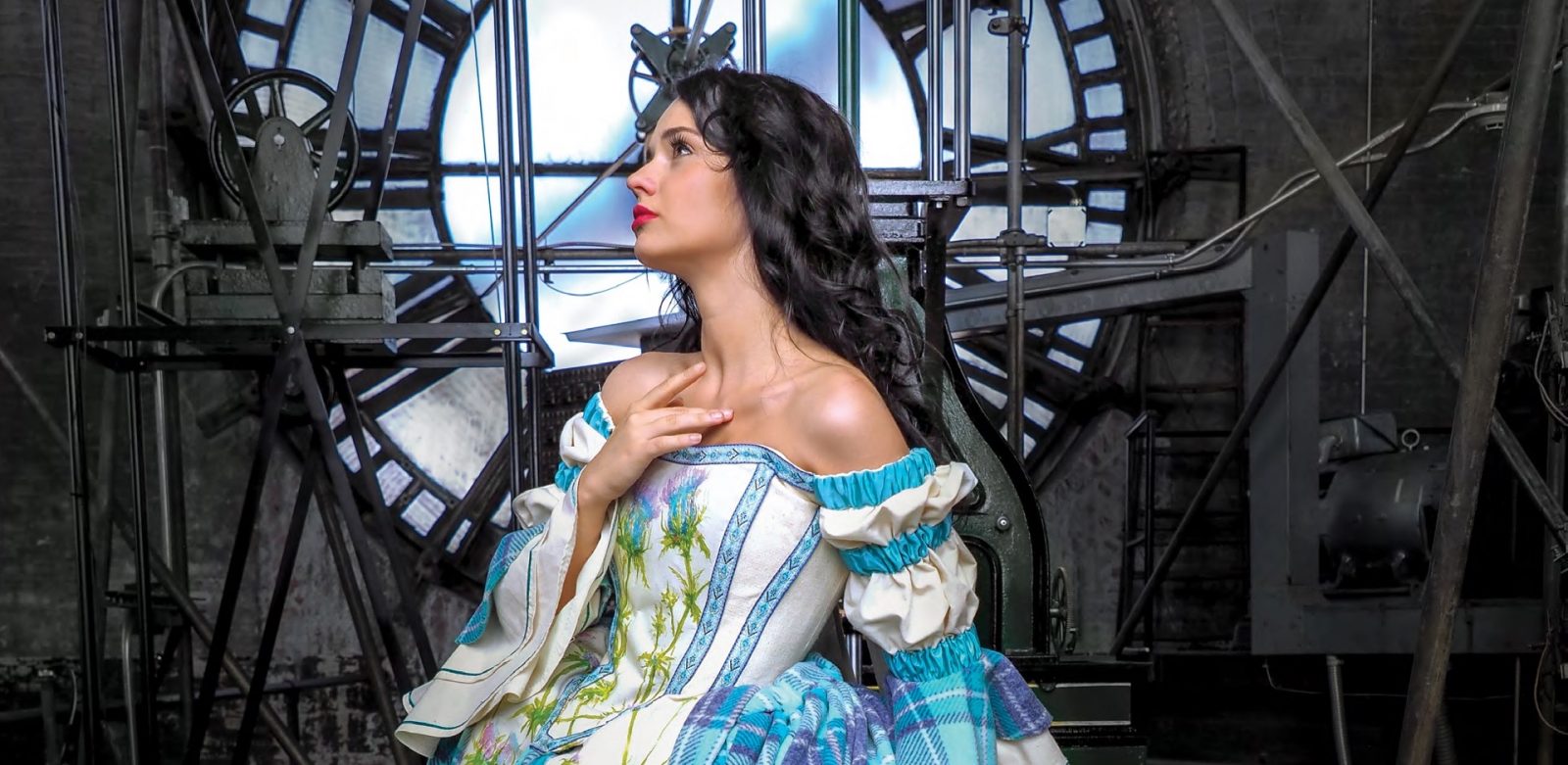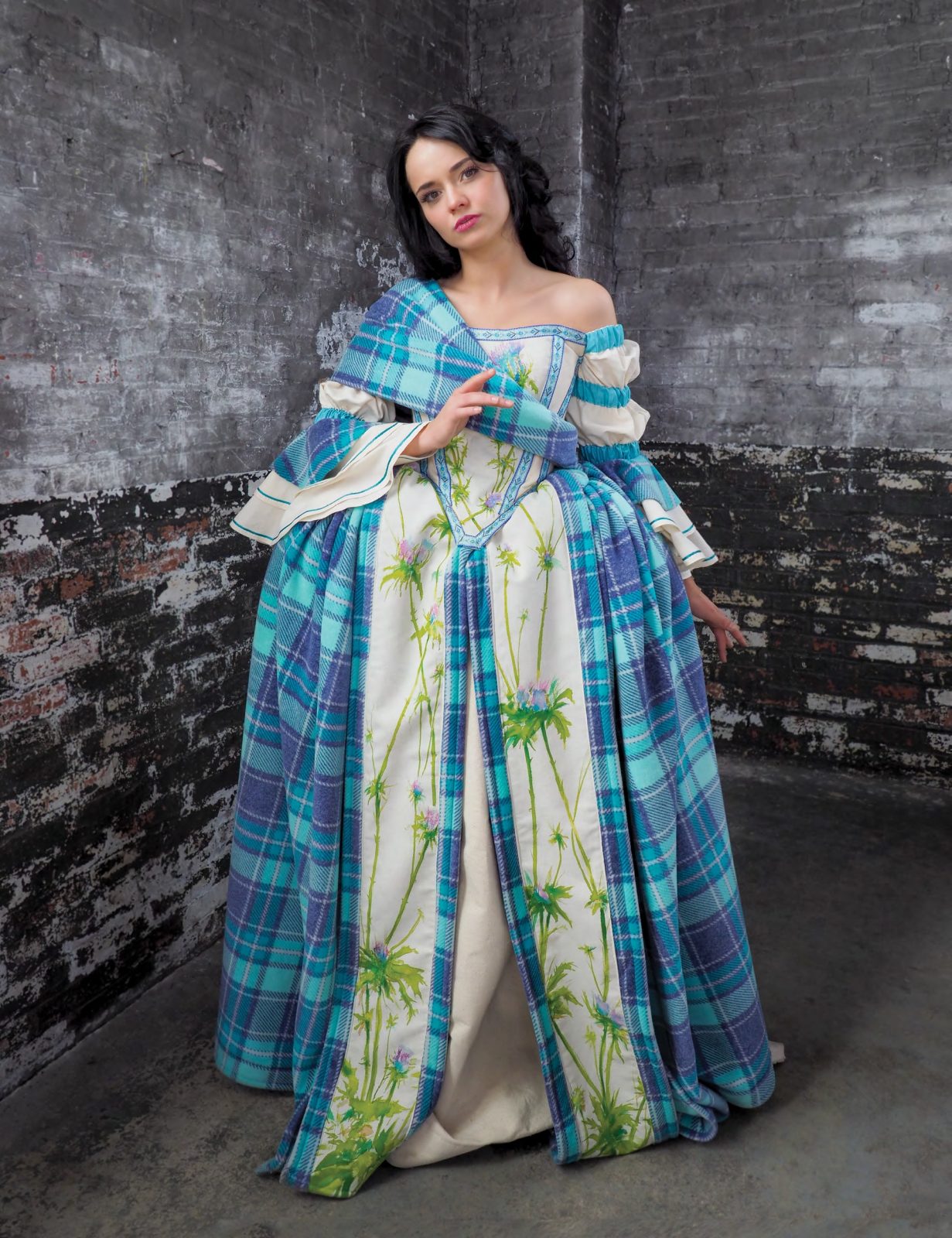
Photography: Steve Parke Gown/Styling: Justina A. Prince
Model: Sarah Bentman MUA and Hair: Nikki Verdecchia of NV Salon Collective
When the day shall come, that we do part,” he said softly, and turned to look at me, “if my last words are not ‘I love you’—ye’ll ken it was because I didna have time.
—Diana Gabaldon, The Fiery Cross
The Bromo Seltzer Arts Tower has been part of the Baltimore landscape since 1911, when Captain Isaac E. Emerson—inventor of the headache elixir Bromo Seltzer—commissioned architect Joseph Evans Sperry to create what would be company headquarters in the style of Florence’s Palazzo Vecchio, complete with a jutting clock tower. It was once the city’s tallest building and definitely the most show-stopping. For a photo shoot about falling through time, it was the perfect location, especially for a magazine that makes this eclectic city its home.
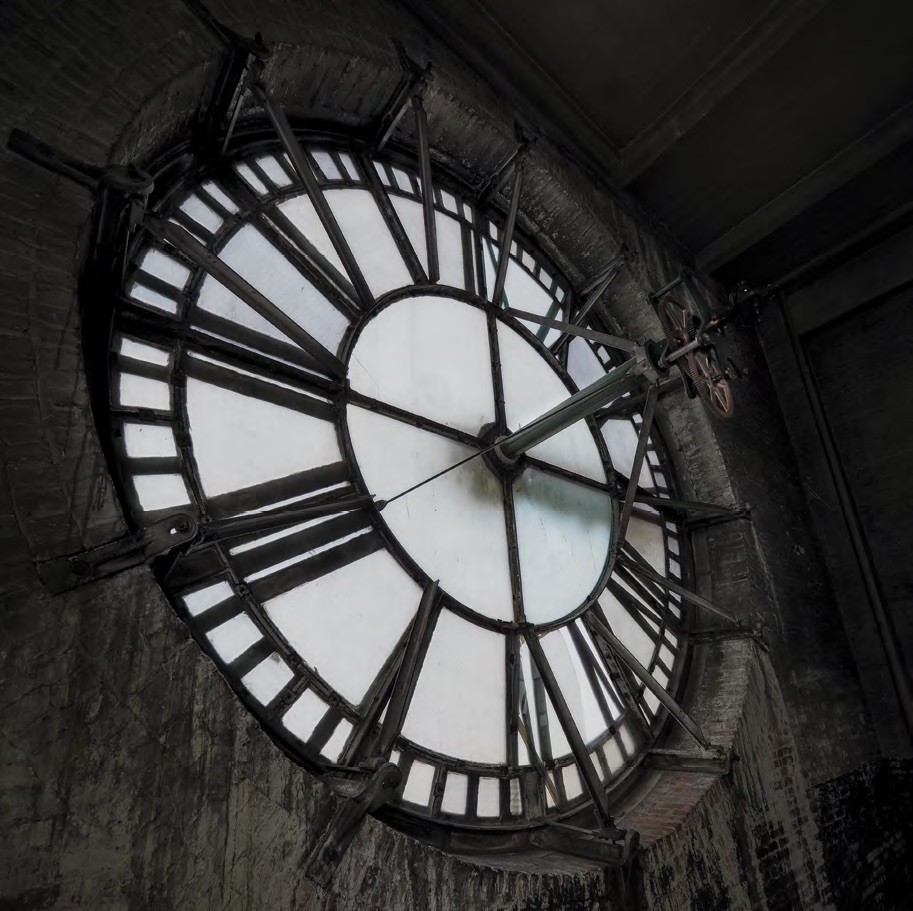 To get to the tower, which was fully restored just last year, you ascend fifteen floors on an old-time freight elevator before climbing a ladder into a click-clacking room that might be the lair of a mad scientist. It’s full of steampunk-esque machines and high-voltage devices you’d do well to keep at a distance. Each of the four walls features a massive clock face made of glass, filtering light in a dreamy way that adds to the surreal effect. You may very well have fallen through time to get here in the first place; not even the light looks the same.
To get to the tower, which was fully restored just last year, you ascend fifteen floors on an old-time freight elevator before climbing a ladder into a click-clacking room that might be the lair of a mad scientist. It’s full of steampunk-esque machines and high-voltage devices you’d do well to keep at a distance. Each of the four walls features a massive clock face made of glass, filtering light in a dreamy way that adds to the surreal effect. You may very well have fallen through time to get here in the first place; not even the light looks the same.
Our time-traveling team needed a dress for our cover that was as dramatic as the locale, and it was photo editor Steve Parke who suggested local makeup artist turned fantasy designer Justina A. Prince, who happens to be a die-hard Outlander fan, not only of the show and books but of costumer Terry Dresbach. Prince was up for the challenge, wanting to pay homage to Dresbach without actually copying any of her designs. “Her work is immaculate and beautiful,” Prince says of the Emmy-nominated designer, “warm and earthy. You believe that someone she’s dressed comes from another time, but they’re relatable too.”

Trying to stay as true to period as she could, Prince sought the help of Mary Bova from Baltimore’s A.T. Jones & Sons—America’s oldest costume shop, which recently celebrated its 150th birthday—in constructing an authentic 18th century corset from scratch.
“I’d never tried to make something period before,” Prince says. “Bova was instrumental in creating this silhouette.” The seasoned costumer came to Prince’s studio and patiently taught her to put steel boning into corsets. “The dress is not historically accurate,
of course,” Prince says, “but the corset is classically constructed, and I’m so grateful! [Bova] is a deeply humble and deeply talented person.”
Prince also enlisted Baltimore artist Tim Kelly to hand-paint the thistles that line the dress and complement the colorful tartan. Why hand-paint the thistles? “I feel like mixing the two mediums elevates both of them,” Prince says. “The painting made the dress feel more timeless to me. Someone from any age could have painted the thistles the same way.”
But just then, for that fraction of time, it seems as though all things are possible. You can look across the limitations of your own life, and see that they are really nothing. In that moment when time stops, it is as though you know you could undertake any venture, complete it and come back to yourself, to find the world unchanged, and everything just as you left it a moment before. And it’s as though knowing that everything is possible, suddenly nothing is necessary.
—Diana Gabaldon, Outlander
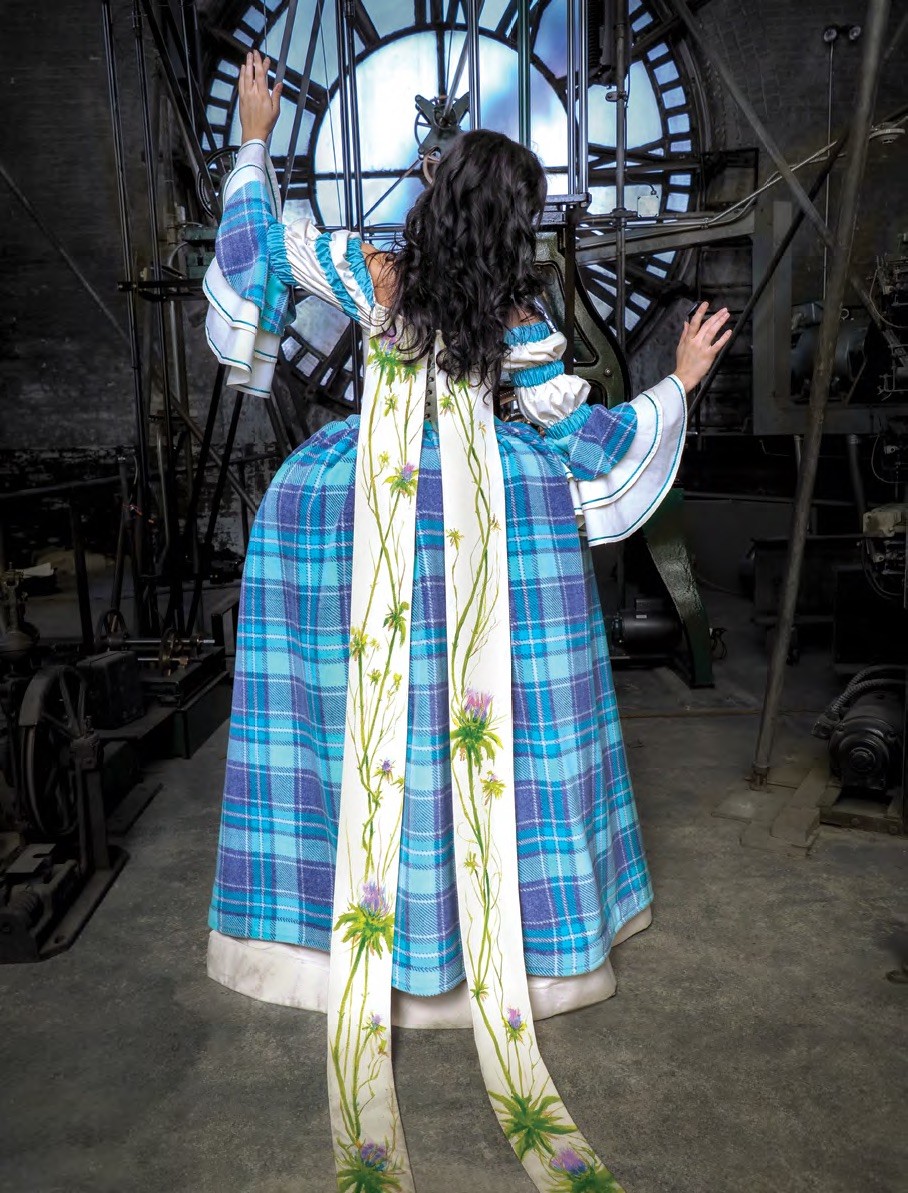 Prince chose Scotland’s national flower for a specific reason too. “The biggest inspiration for me was the idea of the thistle representing Jamie and Claire’s love for each other,” she says, “spanning time and distance. It represents that tumultuousness, their constant effort to stay close to each other even when separated by time and space. Plus they’re unsure of each other at first. They have their hackles, or thistles, up. They need each other to survive but need to protect themselves from each other too.” Braveheart was also an inspiration: “When William Wallace marries the Scottish maiden, the priest wraps a piece of fabric embroidered with thistles around their hands.”
Prince chose Scotland’s national flower for a specific reason too. “The biggest inspiration for me was the idea of the thistle representing Jamie and Claire’s love for each other,” she says, “spanning time and distance. It represents that tumultuousness, their constant effort to stay close to each other even when separated by time and space. Plus they’re unsure of each other at first. They have their hackles, or thistles, up. They need each other to survive but need to protect themselves from each other too.” Braveheart was also an inspiration: “When William Wallace marries the Scottish maiden, the priest wraps a piece of fabric embroidered with thistles around their hands.”
Prince recommended our cover model Sarah Bentman for her Claire-esque dark locks and her “sense of wonder and awe and innocence in how she looks and how she moves through the world”—reminiscent of Claire’s innocence as she travels through time. Nikki Verdecchia of Hampden’s NV Salon kept Bentman’s hair wild (her mission: “make her look like she’s been running through the Highlands all day”) and her face fresh. This was no easy feat on a July morning in a glassed-in room with the (dreamy yet potent) sun shining in. And in a heavy dress, standing in an old clock, no less!
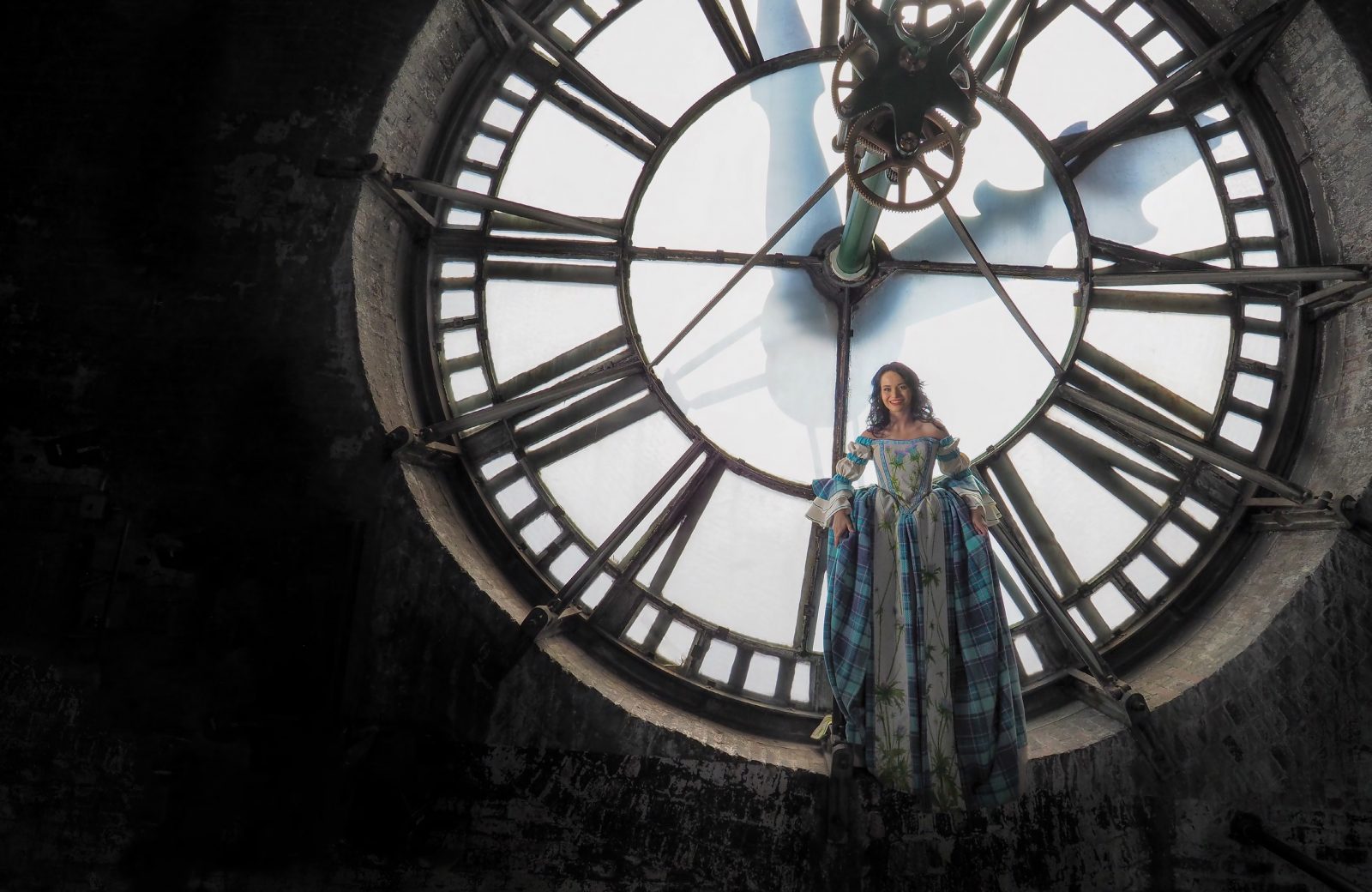
Parke is the one who brought it all together—standing on a ladder, peering through that heavy, dust-filled air to capture the perfect shot. “Seeing the dress on Sarah for the first time in person,” he says, “I couldn’t wait to get her in front of the large panes of glass, clock hands, and Roman numerals. This beautiful gown has a remarkable silhouette that plays perfectly against the industrial feel of the clock face and gears and the dinginess of the space. And how often do you have a timepiece that dwarfs a human being at your disposal?”
Several artists came together, then, to create these images, capturing a moment both modern and classic, in a location rooted in history, evoking a feeling of falling through time. As we read in Outlander, “There were moments, of course. Those small spaces in time, too soon gone, when everything seems to stand still, and existence is balanced on a perfect point, like the moment of change between the dark and the light, and when both and neither surround you.”
Follow Carolyn Turgeon on Instagram @carolynturgeon. Find photographer Steve Parke at steveparke.com.




























